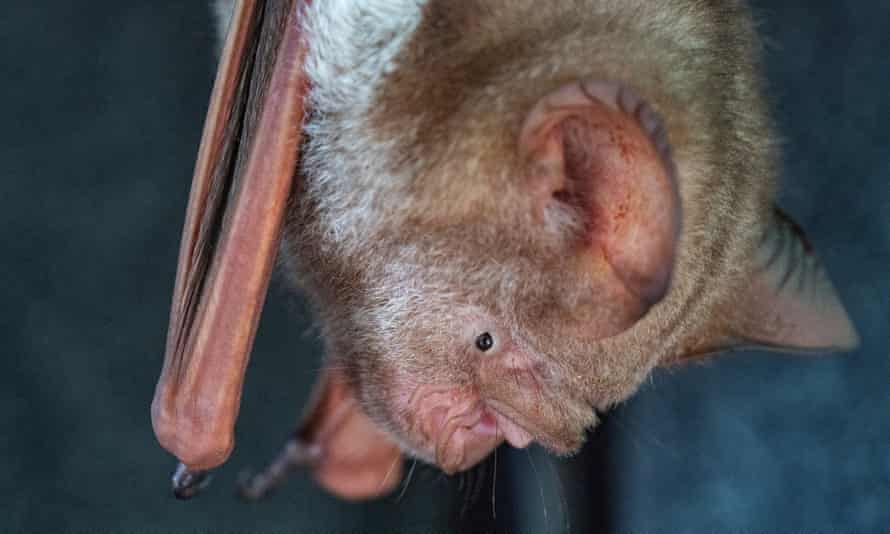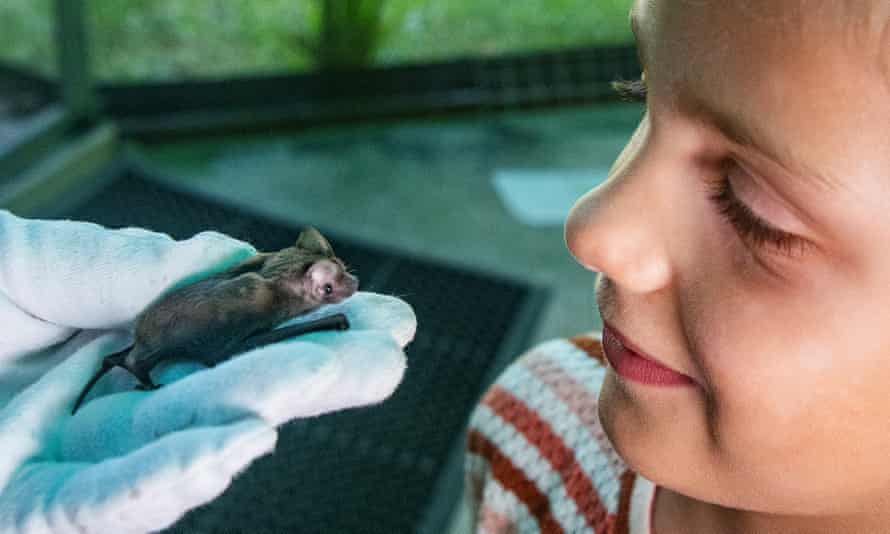Shared from www.theguardian.com
It is feeding time at the Tolga bat hospital on the Atherton Tablelands, in the hills west of Cairns. Garlands of sliced apples, pears and rockmelon festoon the feeding shelter. High above us, flying foxes are watching, their eyes bright with interest, their ears swivelling like radar dishes. They clamber down and bury their faces in this all-you-can-eat fruit salad. Never have bats been more relatable.
I am on a guided tour of the Queensland hospital led by its founder, Jenny Maclean. The hospital is set on two hectares of land tucked into forested hills. As we stroll among the impossible green of tropical foliage, riflebirds – inky males with iridescent bibs, and females in cinnamon and nutmeg – rustle through the trees. Somewhere in the distance, sulphur-crested cockatoos shriek their arrival, but the most prominent sounds are the chatter and trills of flying foxes.
Jenny began her work with bats in 1990. Her first patients were two baby spectacled flying foxes, orphaned when their mothers were killed by tick paralysis. Thirty years later, the hospital cares for 1,000 bats a year. The facilities include a nursery, a six-metre-high flight cage, an area shared between recuperating adults and pups transitioning from nursery to flight cage, and an enclosure for tiny insect-eating microbats.
About half of the flying foxes that pass through the hospital are orphaned pups. Brought in between October and December, at the peak of tick season, they are housed in the nursery and then released in groups from February to March, when old enough to care for themselves. Now that the youngsters are on their way to join the wild colony at the Tolga Scrub, the quiet nursery building is being used as a research lab by visiting scientists.
Last season was a good one for flying foxes, Jenny tells us. The number of orphans was well down. In the previous year, 250 babies had been brought into the nursery. During times of heat stress on the coast, when searing daytime temperatures kill adults in the trees, that number can double.
Although the pups are seasonal, the hospital sees a steady intake of other patients. Many have suffered injuries from barbed wire fences, almost invisible at night. The hospital works with local landholders to make their fences more wildlife-friendly. Focusing on “hotspots” where bats regularly become snagged on barbed wire has reduced the number of collisions.
The largest contingent at the hospital is of endangered spectacled flying foxes, easily recognised by the rings around their eyes and peach-coloured fur across neck and shoulders. Clustered with them are black flying foxes with dark chocolate mantles. The little red flying foxes hang out together.
Flying foxes are important pollinators. Some gum trees pump up nectar production at night to attract them to the flowers. In turn, bats carry pollen between trees. This relationship is a vital part of forest ecosystems.

Not all of the hospital’s patients are as big and boisterous as the flying foxes. In the microbat enclosure we are introduced to Lady Di, a diadem leaf-nosed bat. She is small and round with huge ears, tiny eyes and a lot of self-assurance.
Unlike flying foxes, which use vision to find their way around, Lady Di understands her world through sound. She emits high-pitched calls and interprets their echoes to get an idea of her surroundings. The calls are inaudible to us, so Jenny uses a bat detector app to translate the ultrasound into lower frequencies. Pulses appear on the screen as Lady Di explores the world from her perch. She seems as curious about us as we are about her.

Some of the hospital’s bats have become internet favourites. For a few weeks, Jinx, a baby eastern tube-nosed bat, was the star of the hospital’s Instagram account. Jinx is now back in the rainforest, but another tube-nosed bat is recovering at the hospital. One of my favourite species, tube-noses have bug eyes and snorkel nostrils, and their wings are dappled yellow like spots of sunlight on leaves. This upside-down world of bats is weird and fascinating.
Allow Instagram content?
This article includes content provided by Instagram. We ask for your permission before anything is loaded, as they may be using cookies and other technologies. To view this content, click ‘Allow and continue’.
Later, when I go for an evening walk, the path is littered with sprays of eucalyptus flowers snipped off by mischievous cockatoos. Overhead, a flying fox is silhouetted against the darkening sky. On measured wingbeats, it heads towards the forest to feed on the flowers the cockatoos have missed. It is easy to overlook the work of these bats because they do it all in the dark.
Getting there
The Tolga bat hospital at 134 Carrington Road, Atherton, is 90 minutes’ drive from Cairns via the Kennedy Highway or Gillies Range Road. Bookings are essential.
Images and Article from www.theguardian.com

